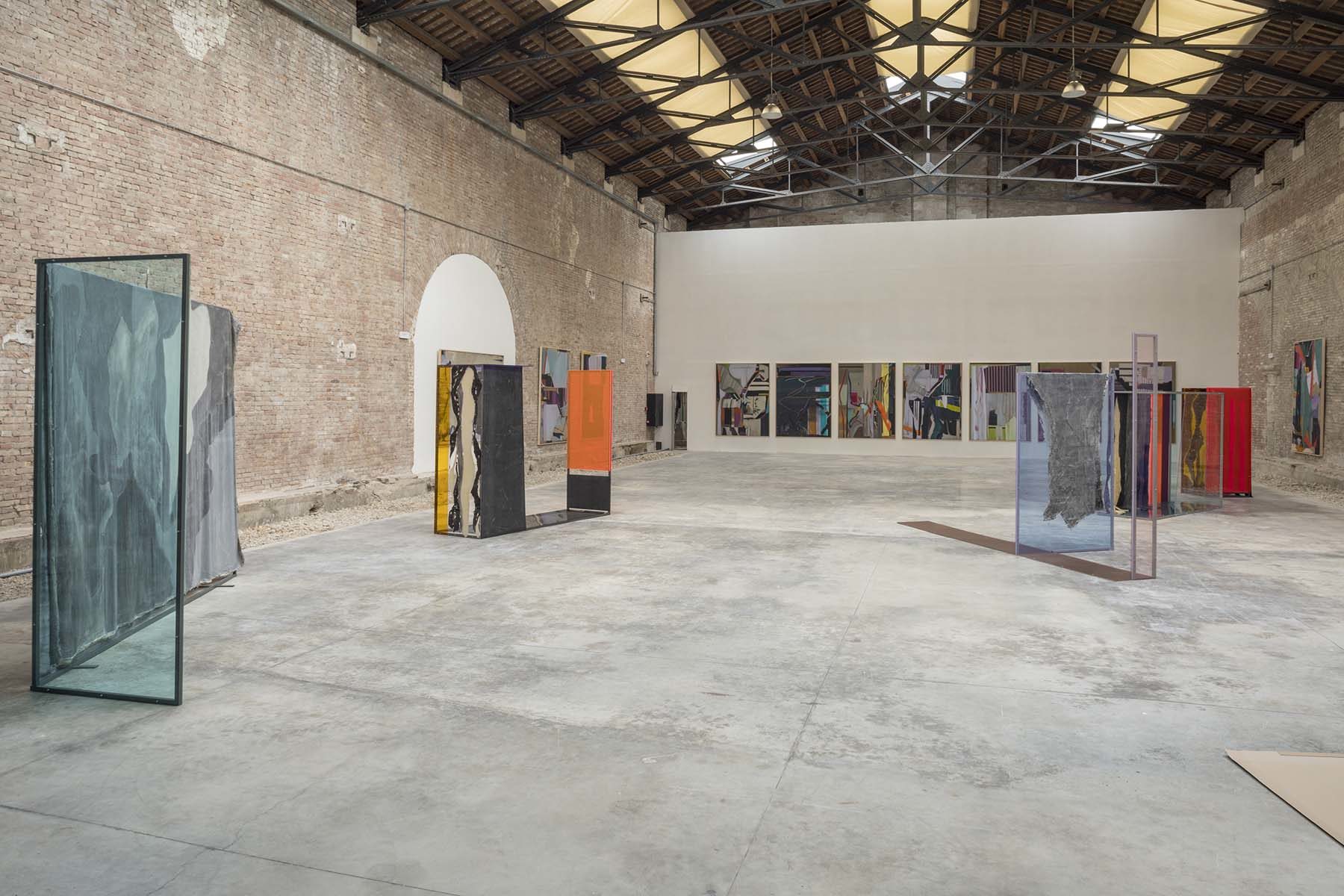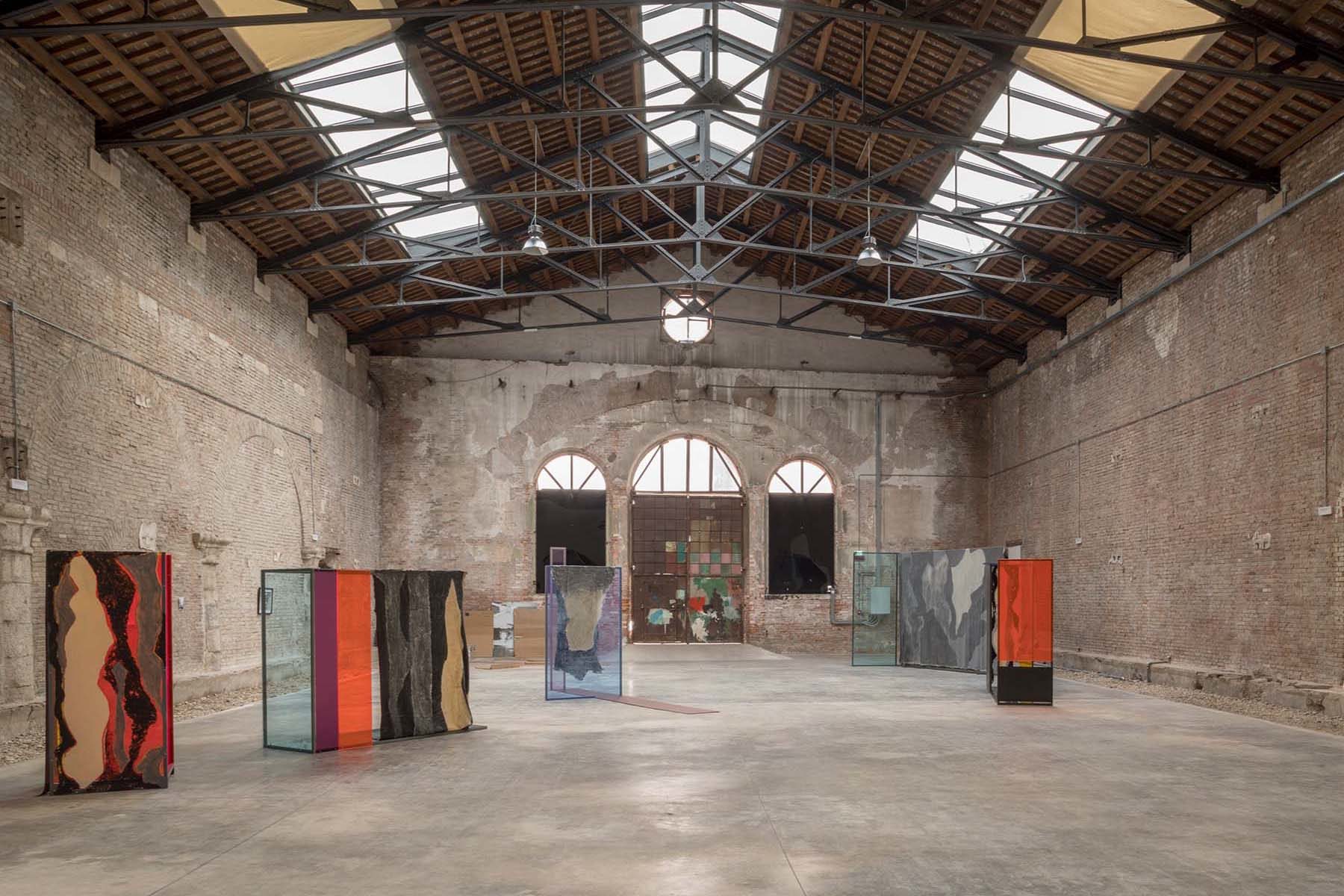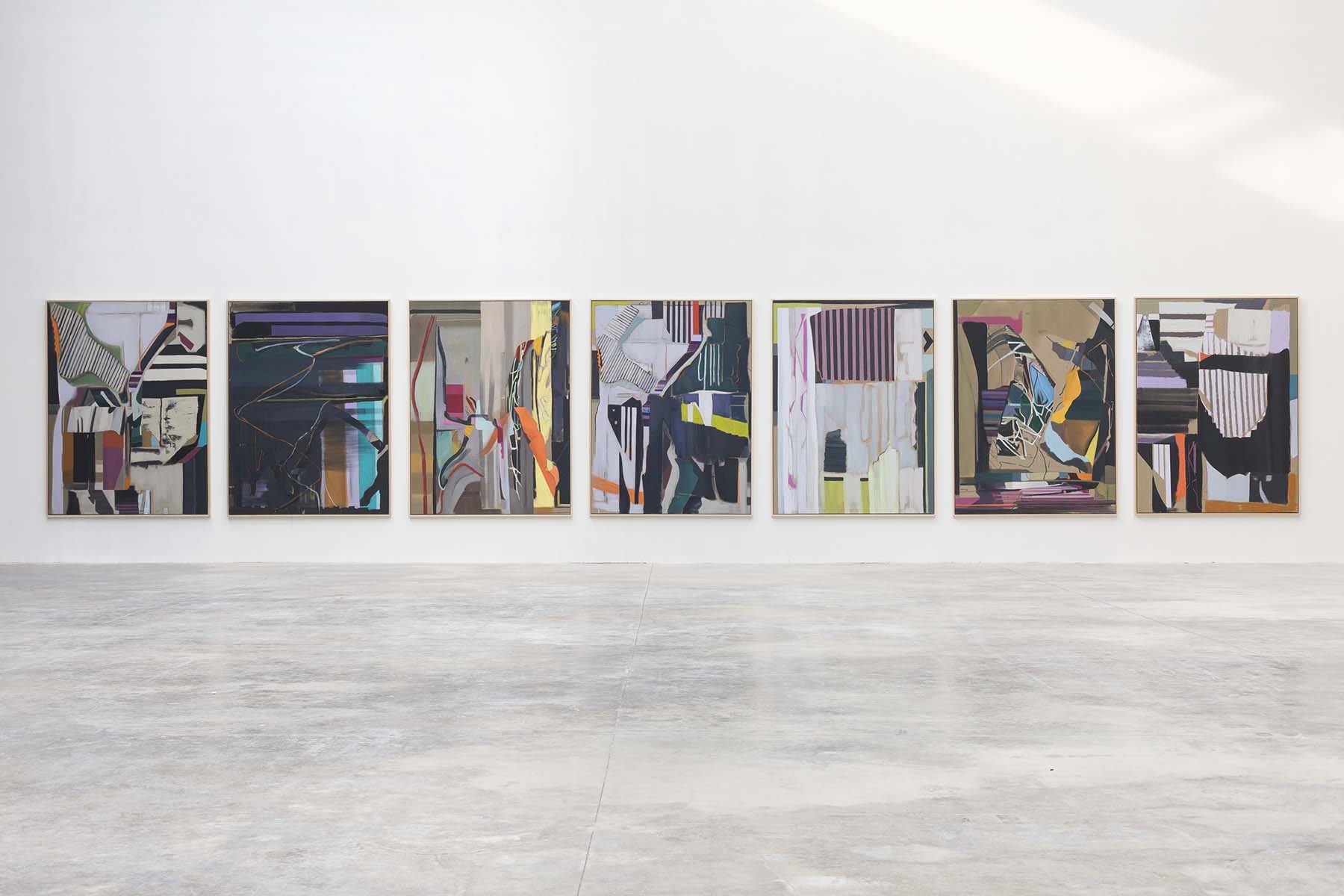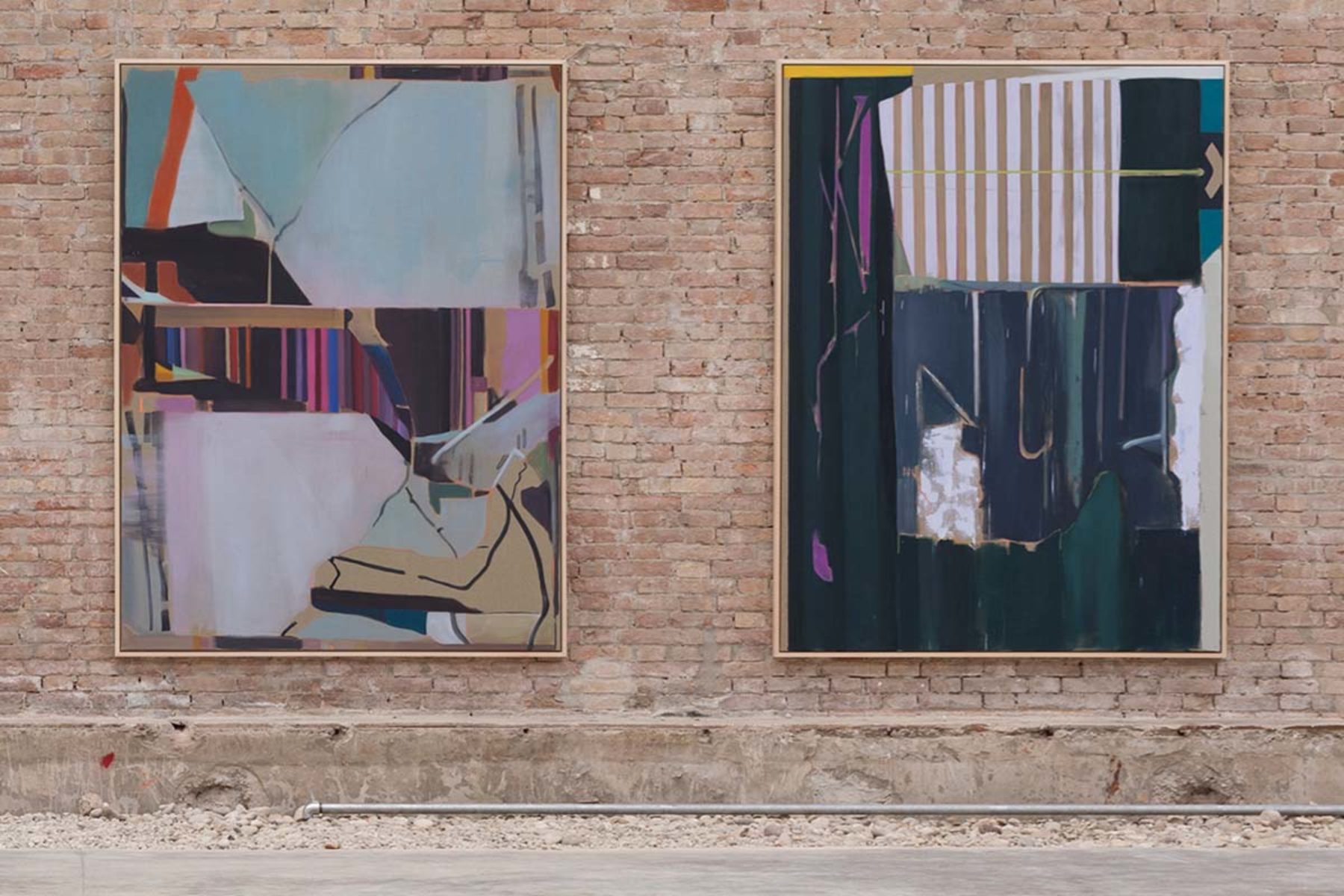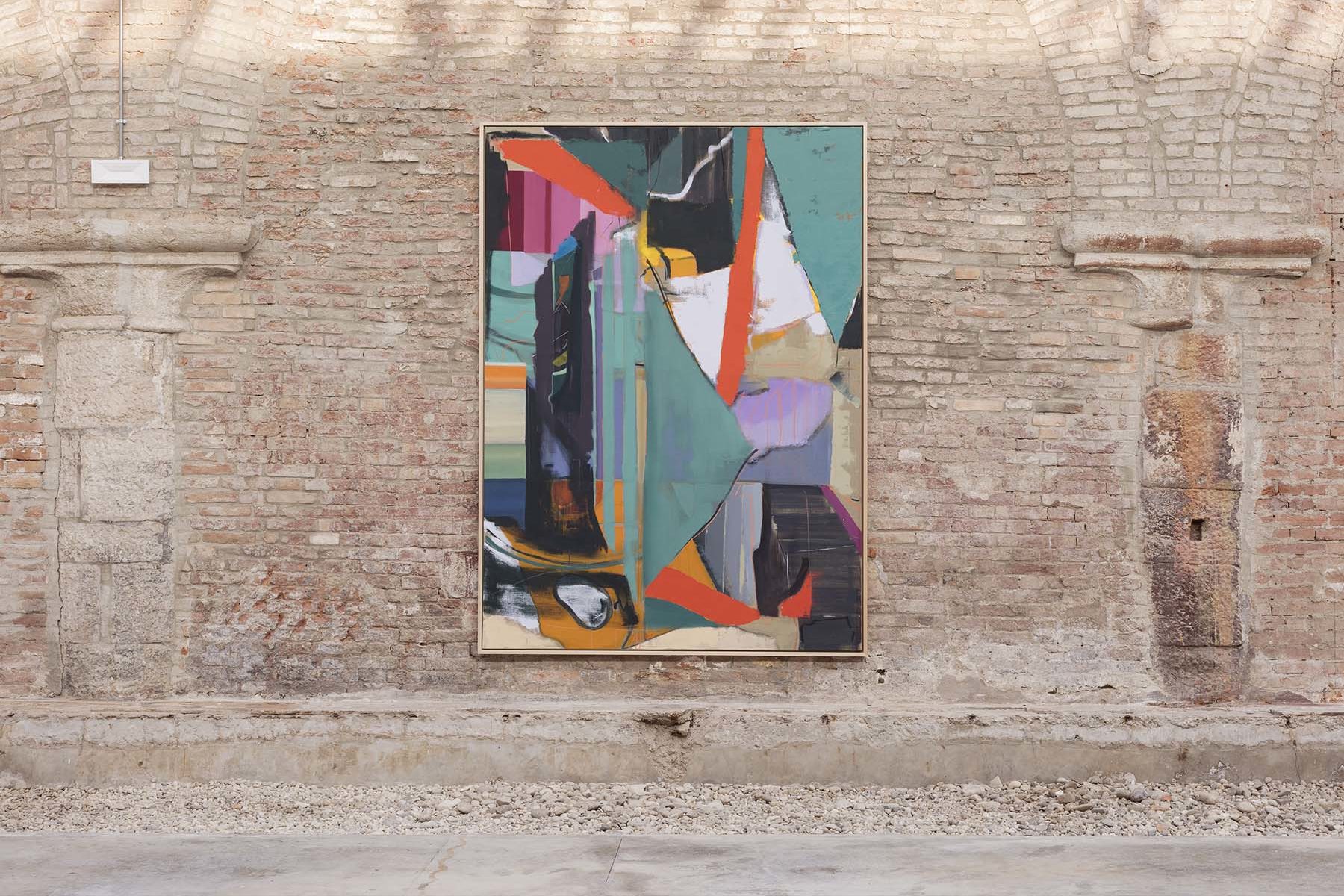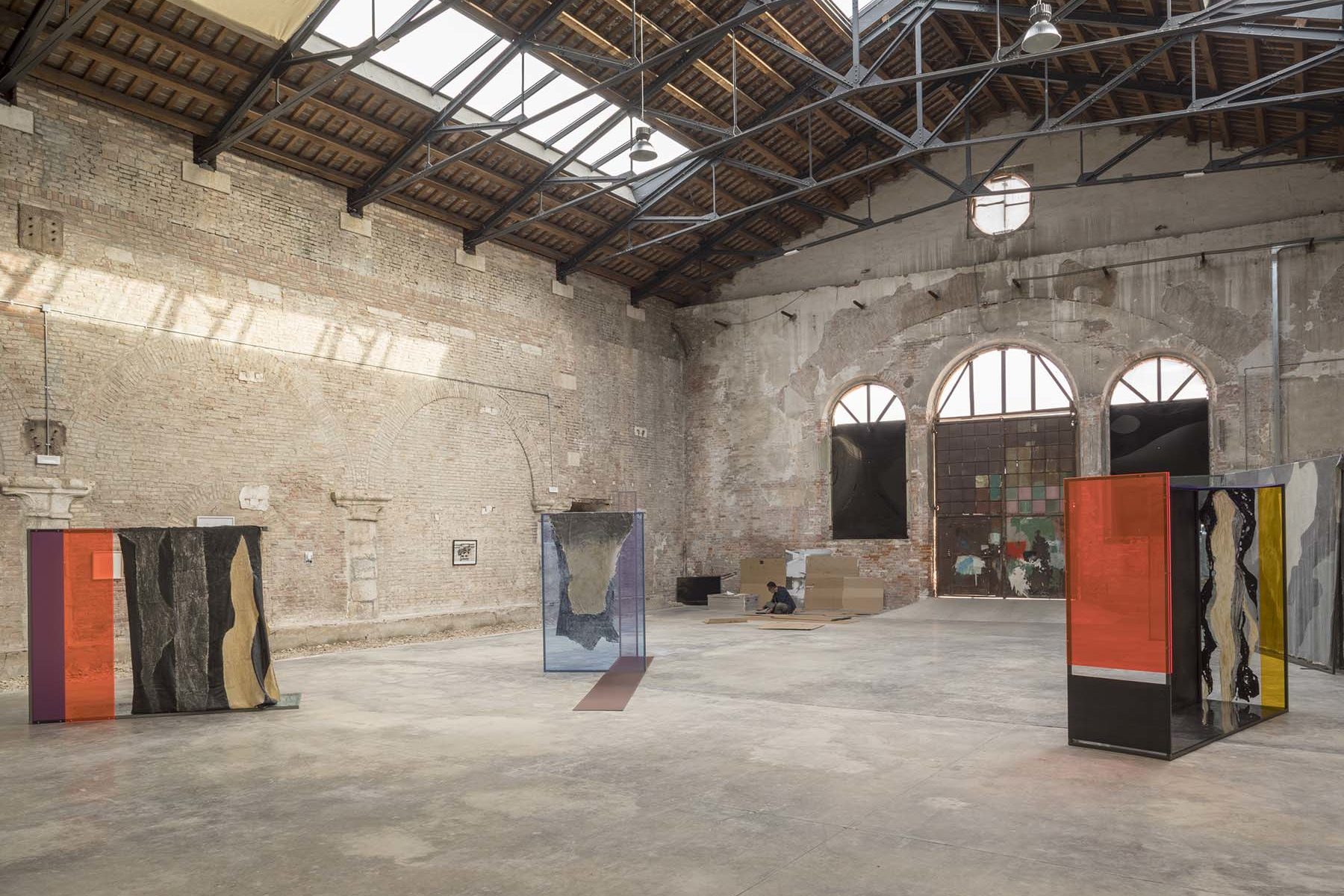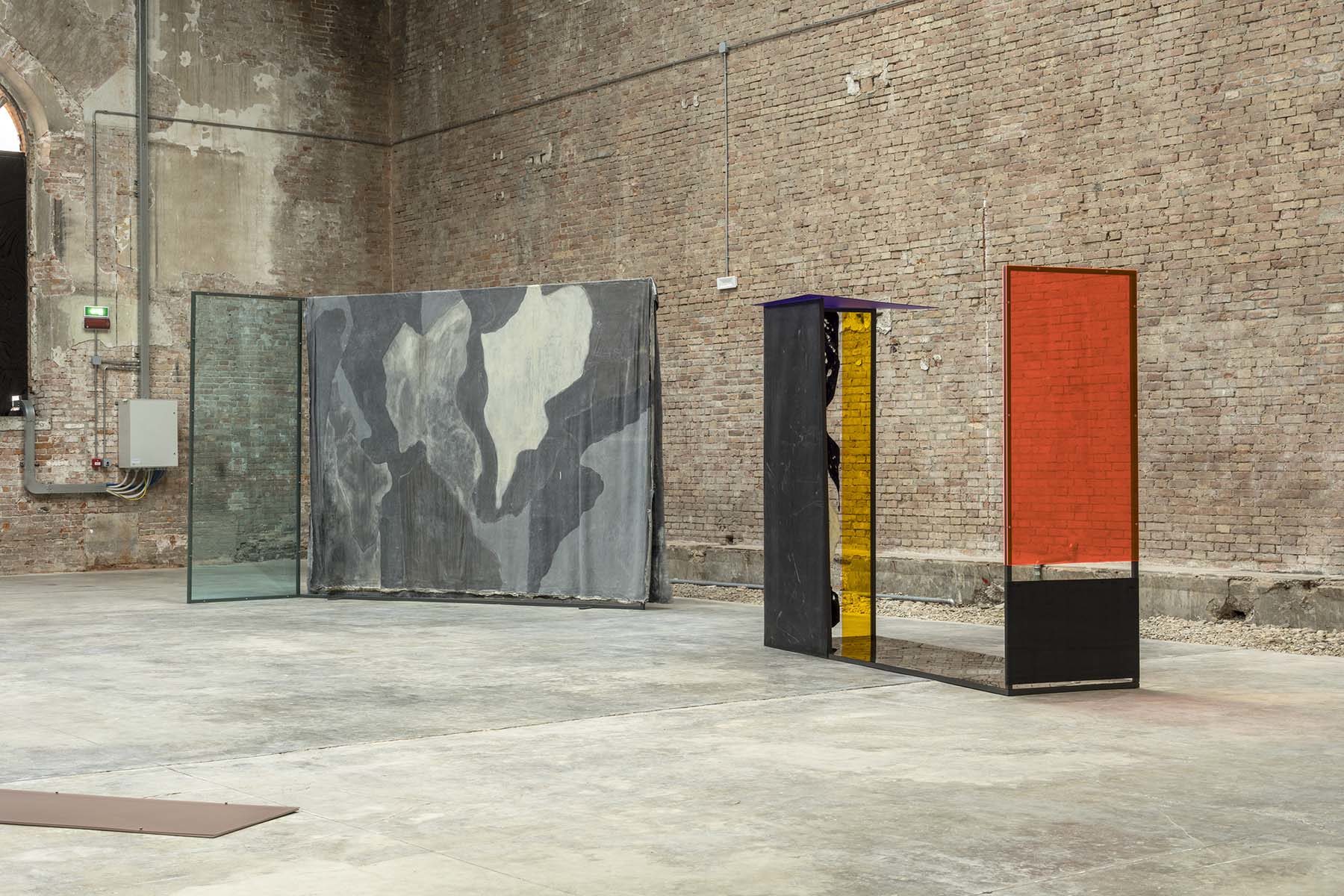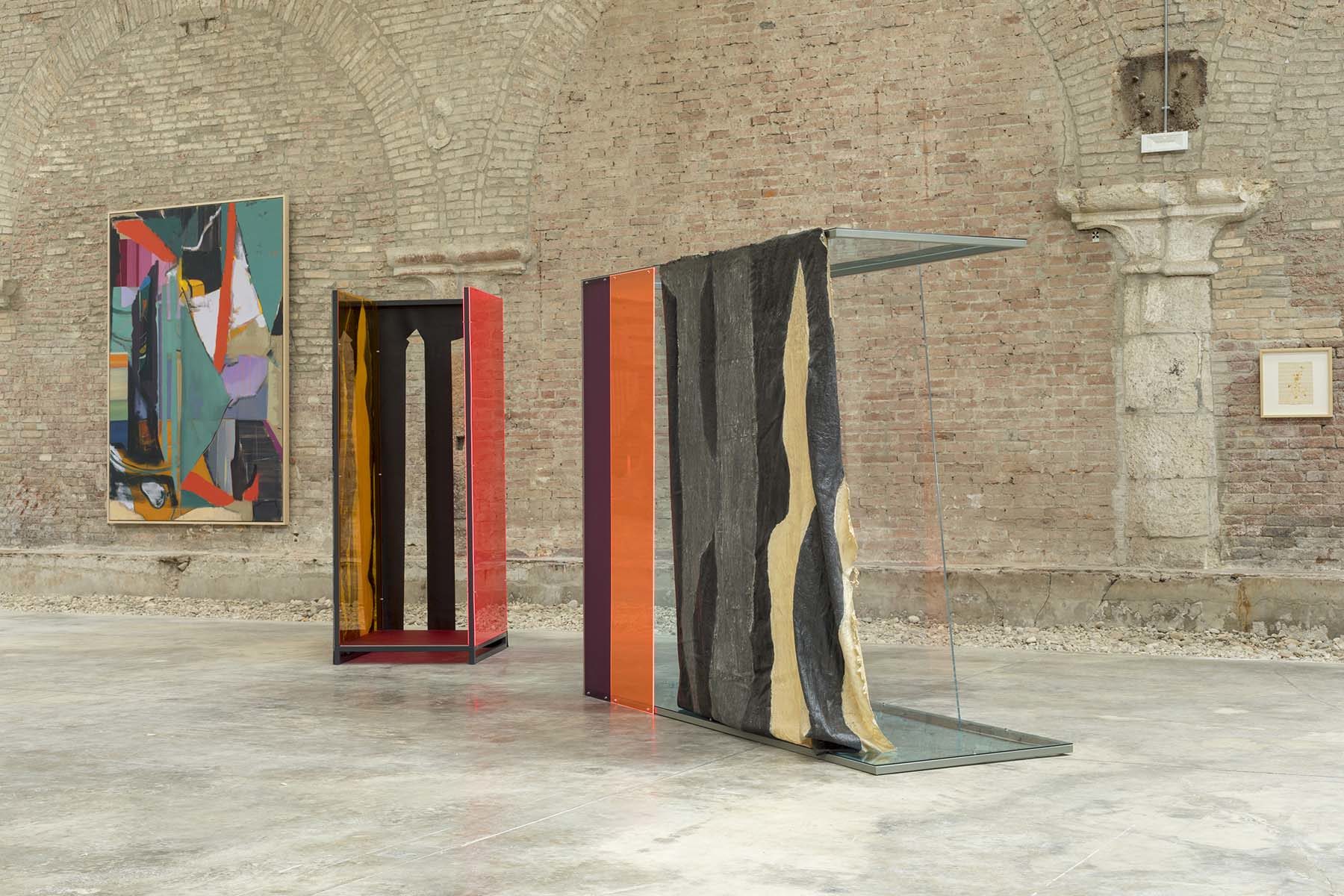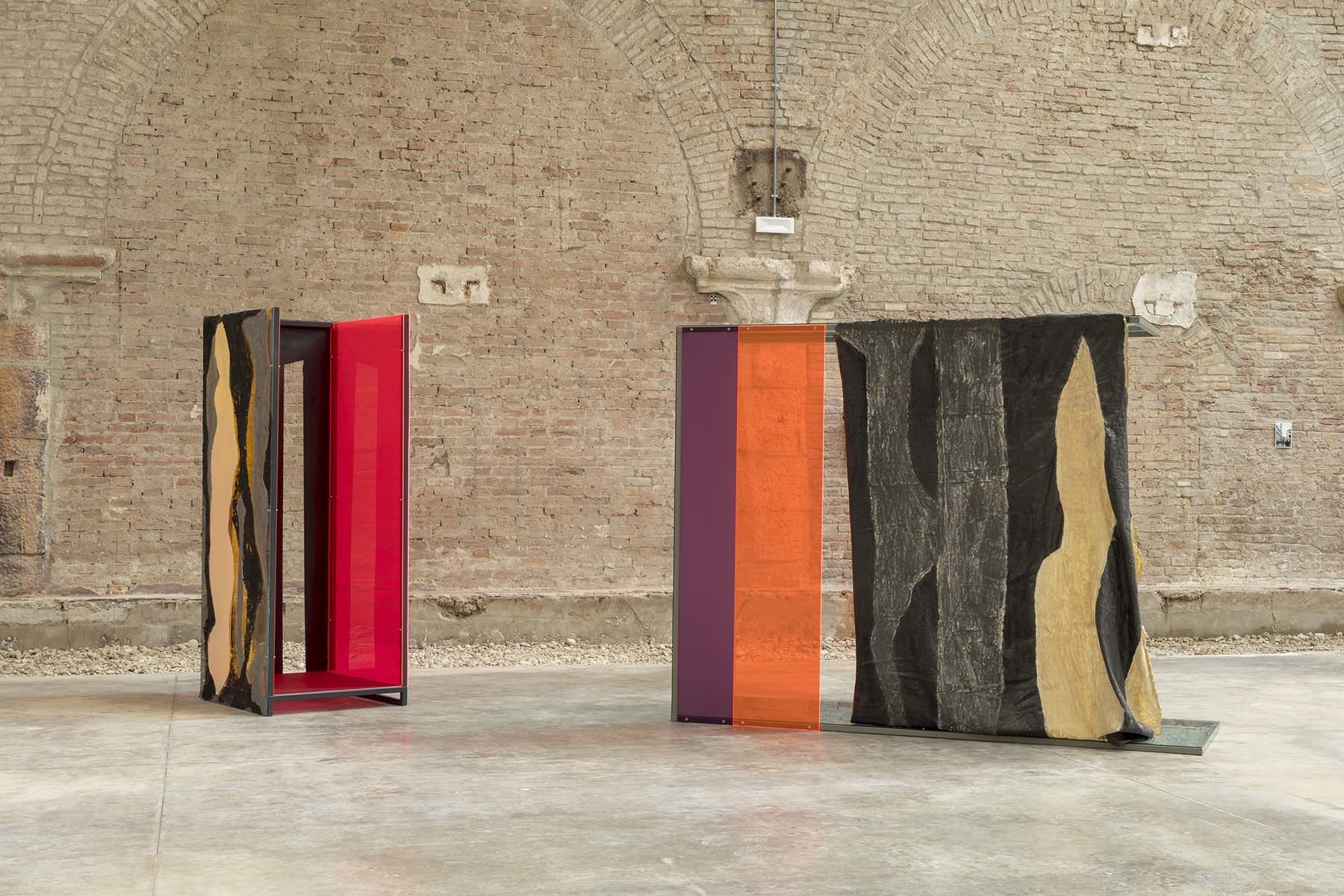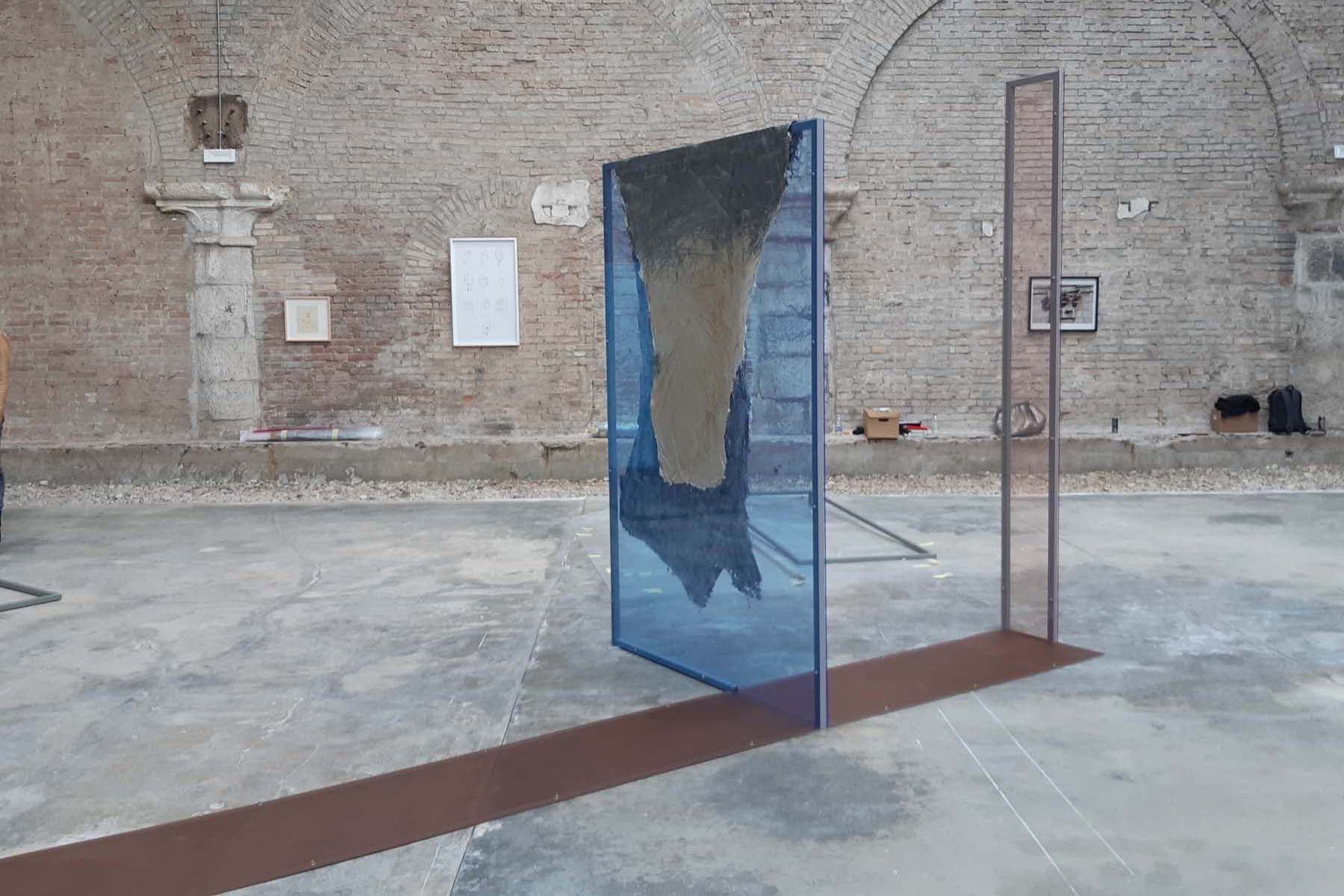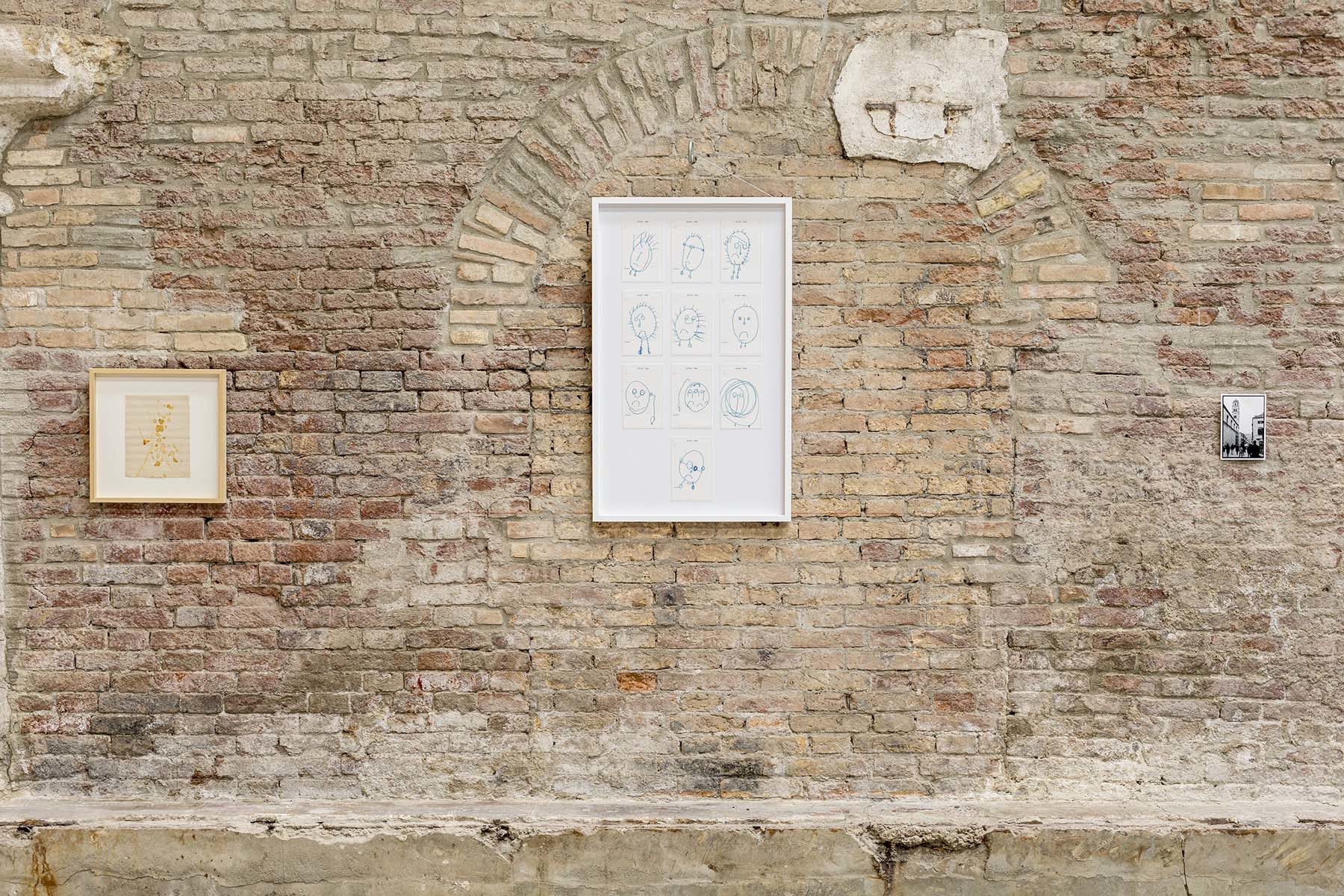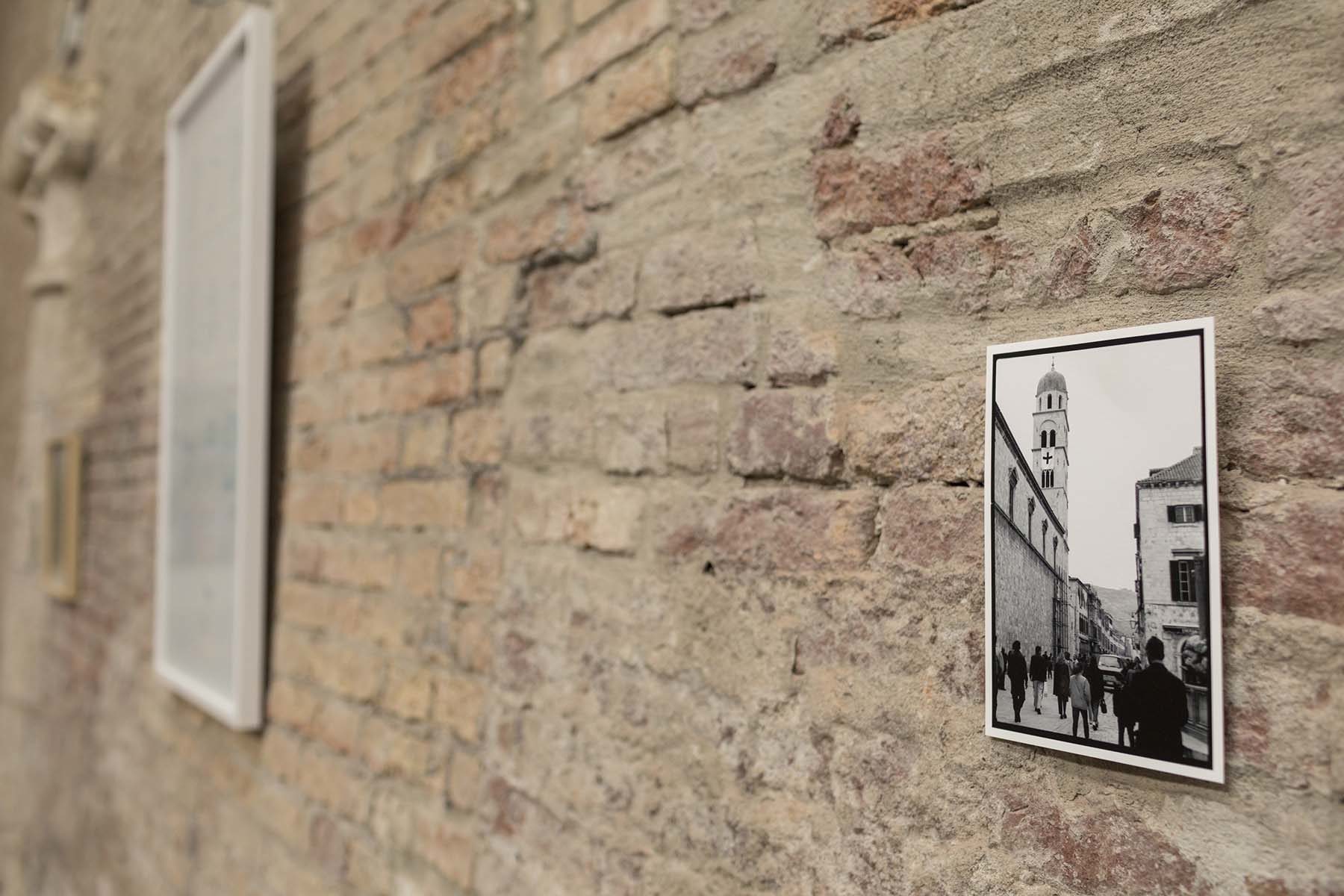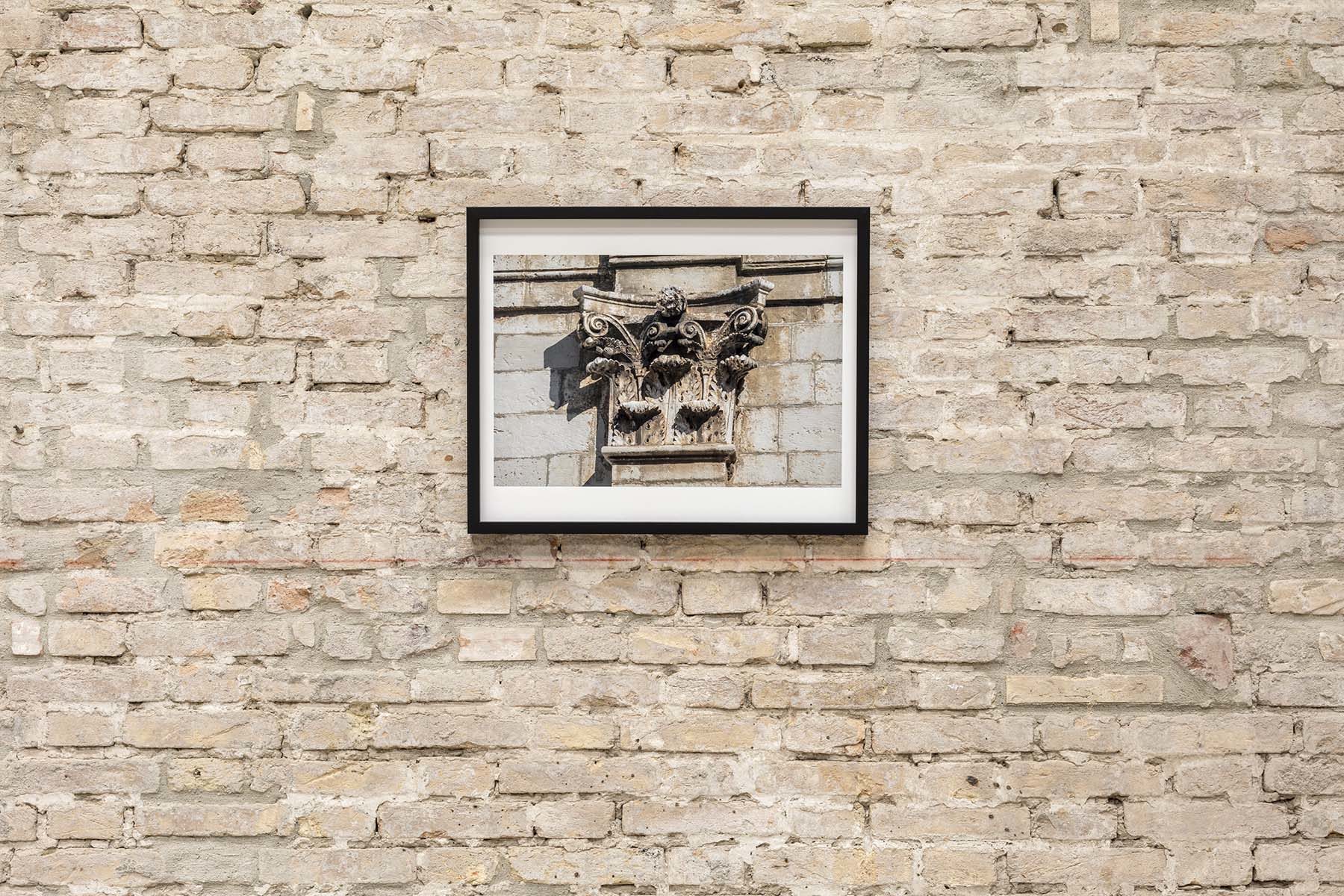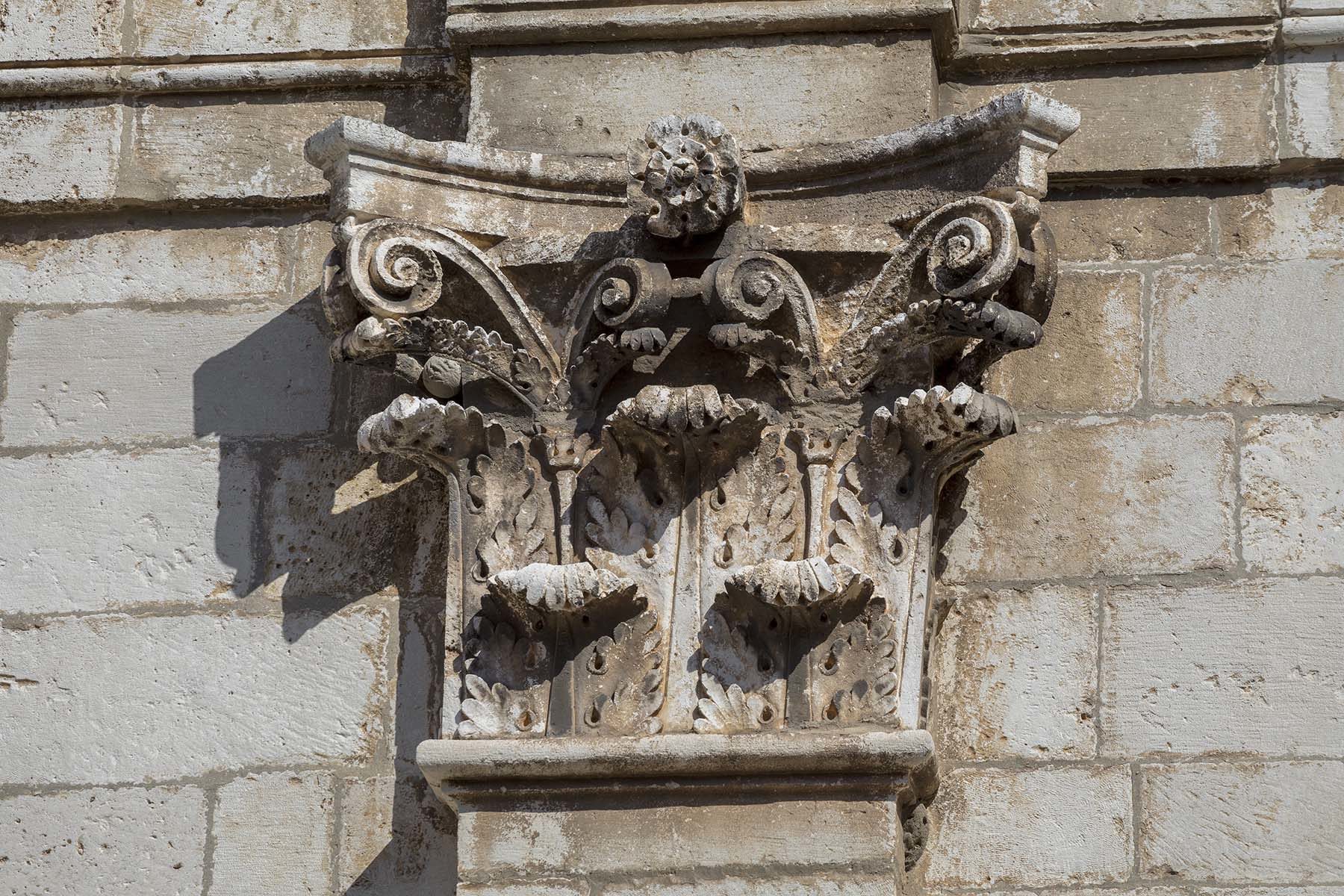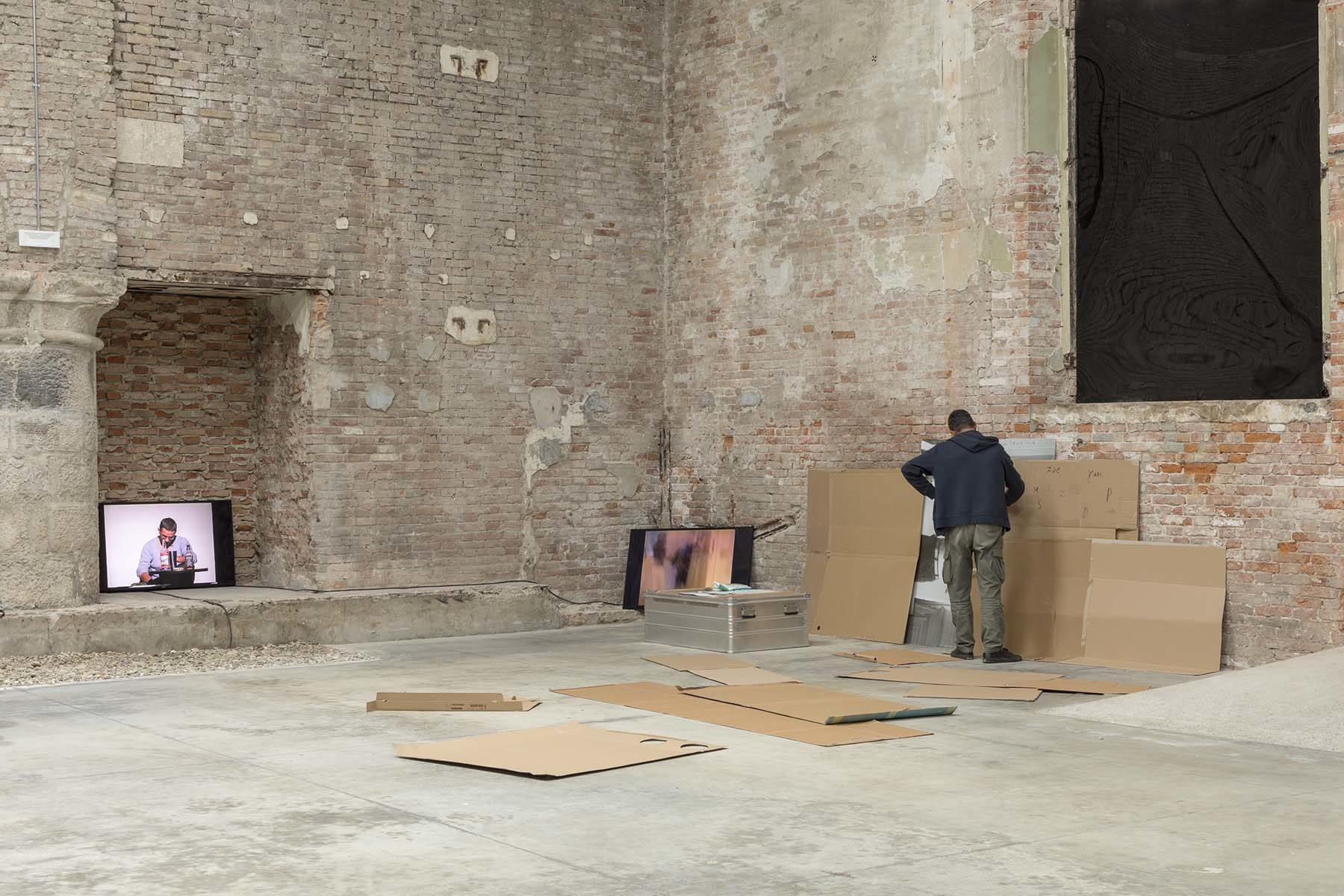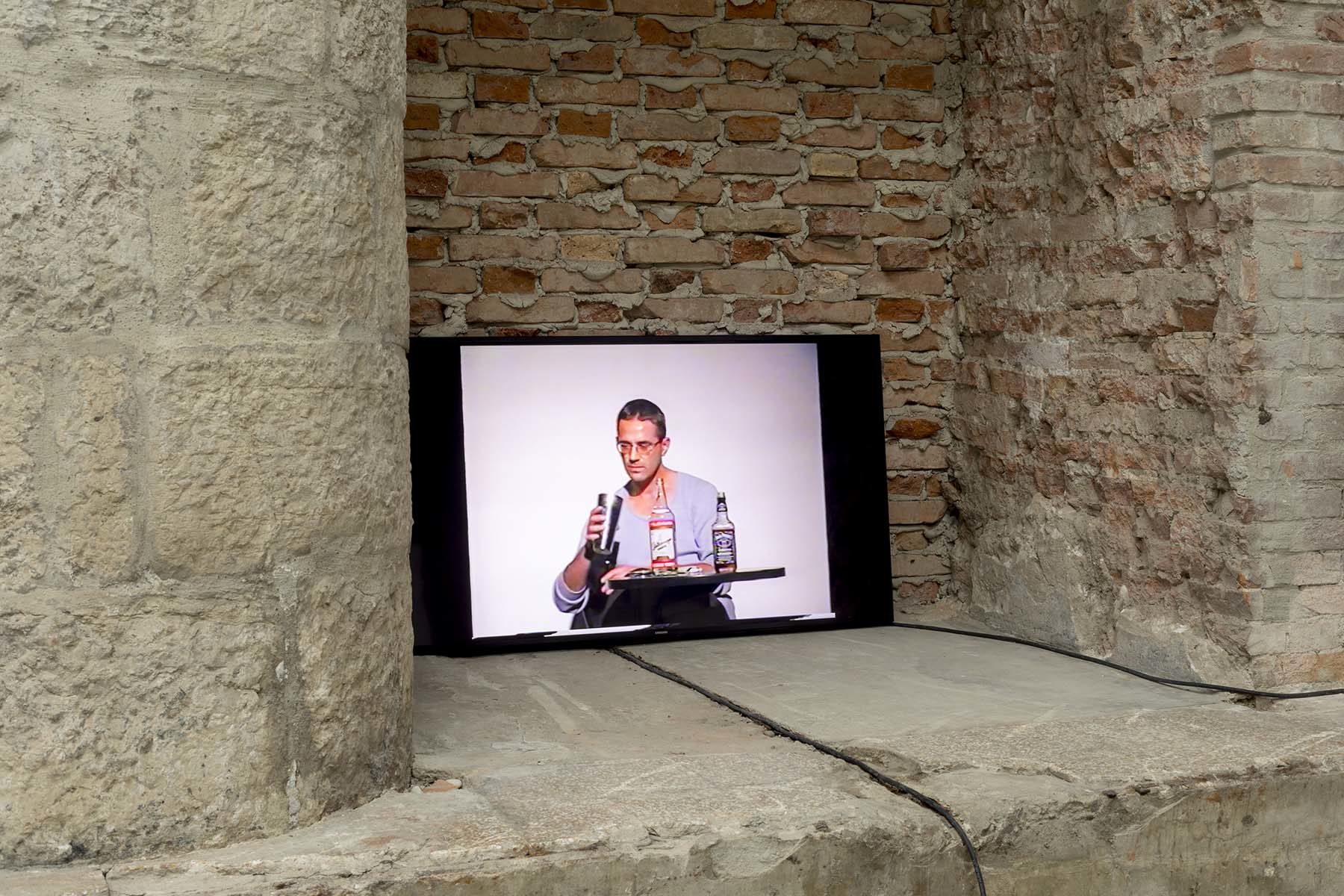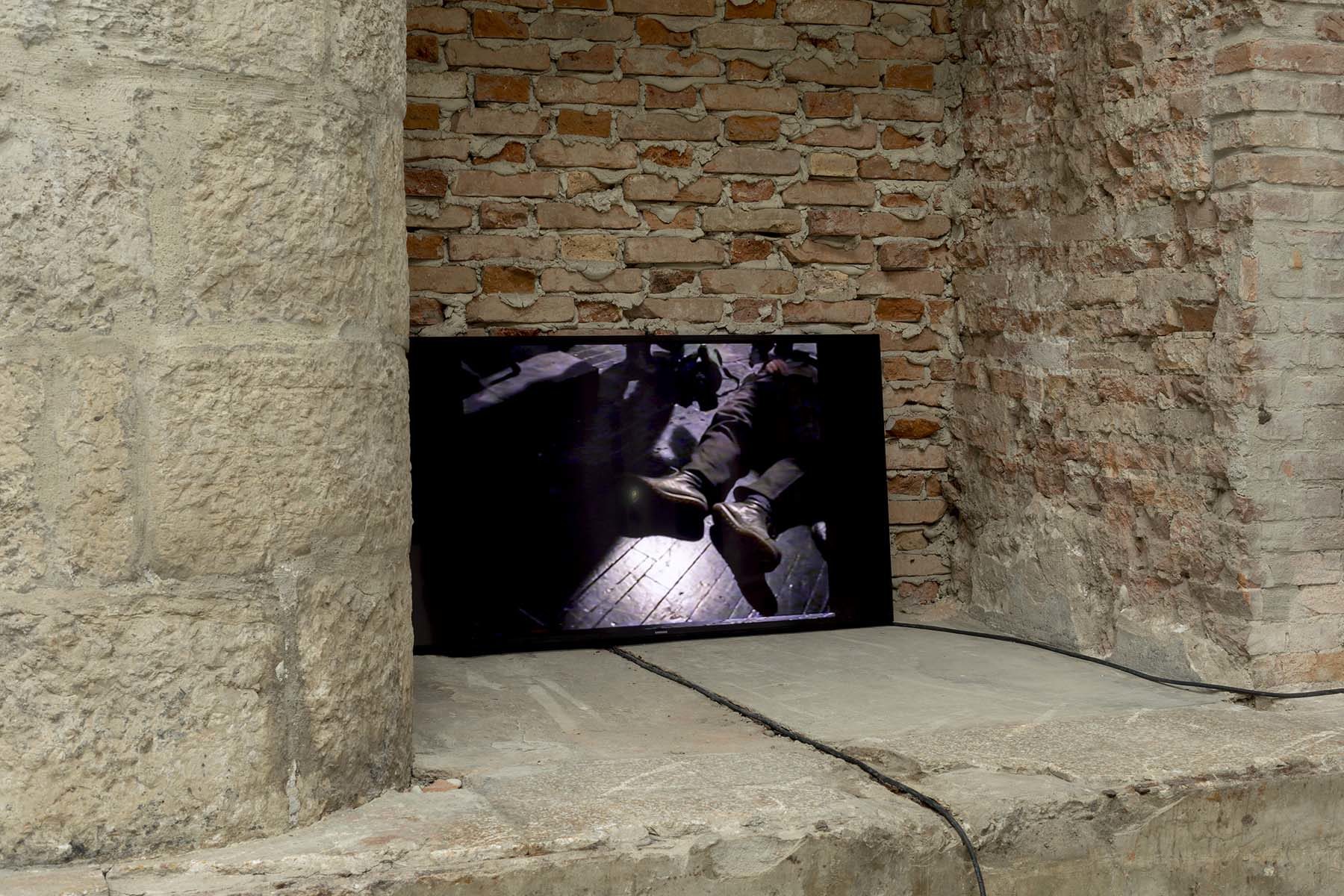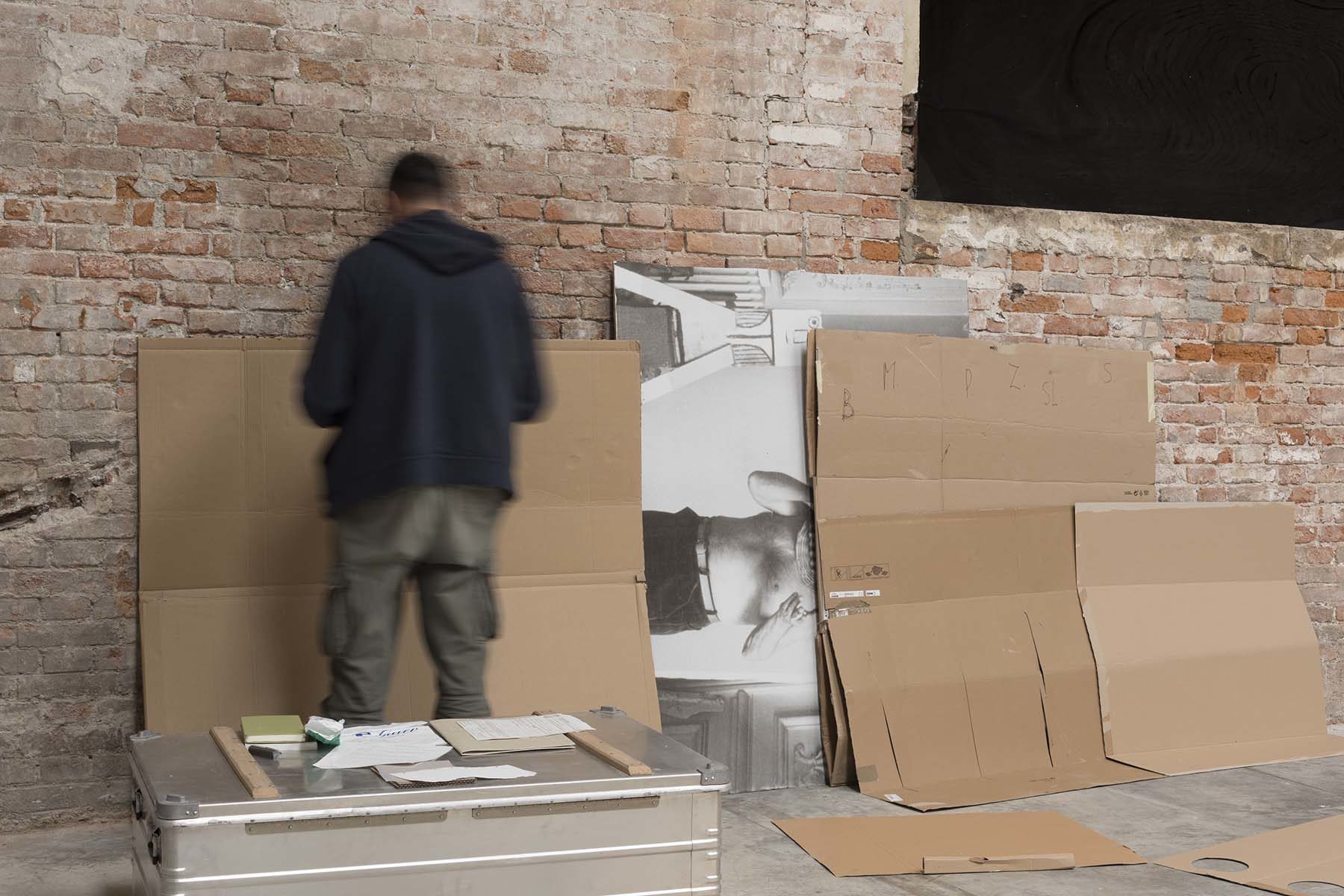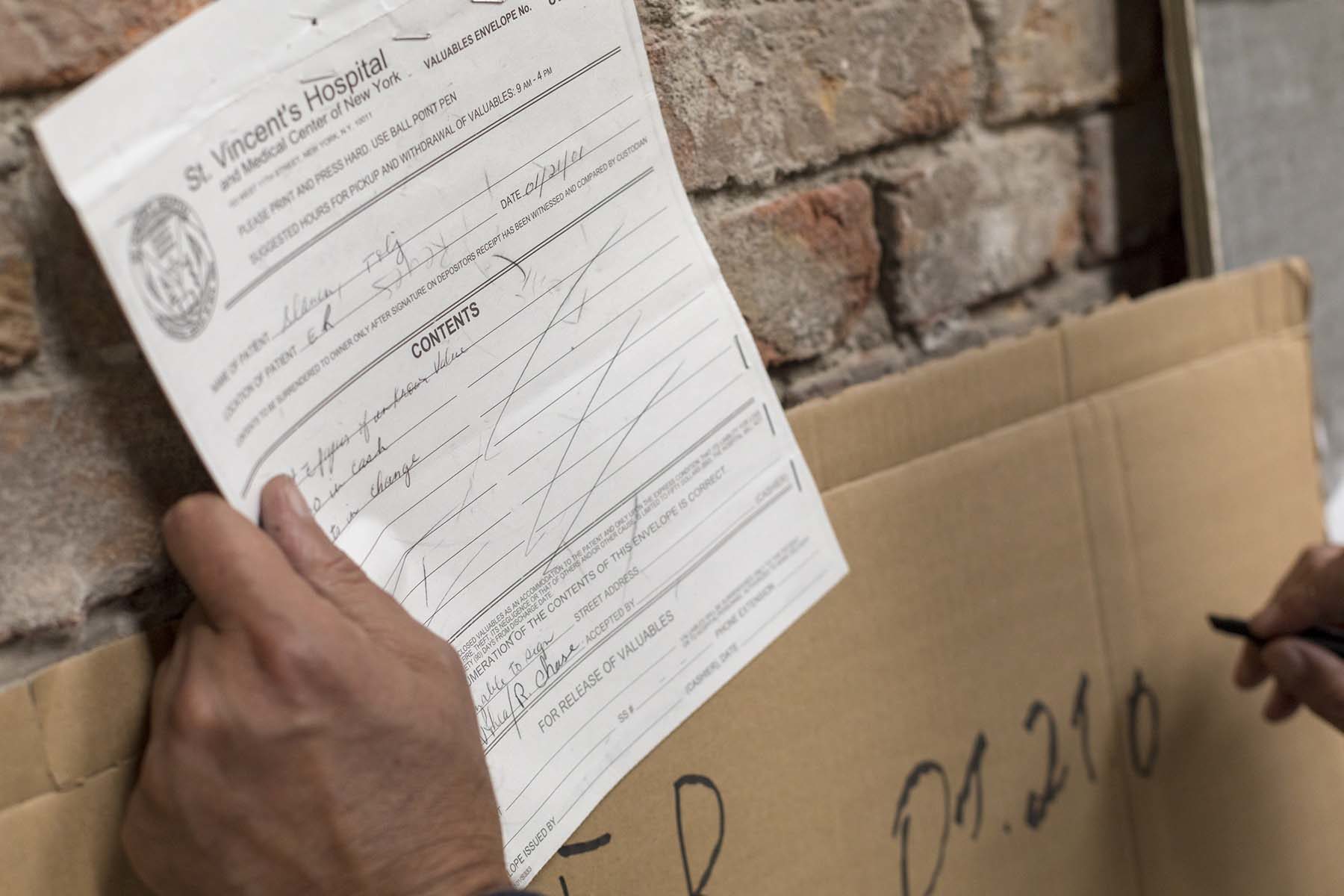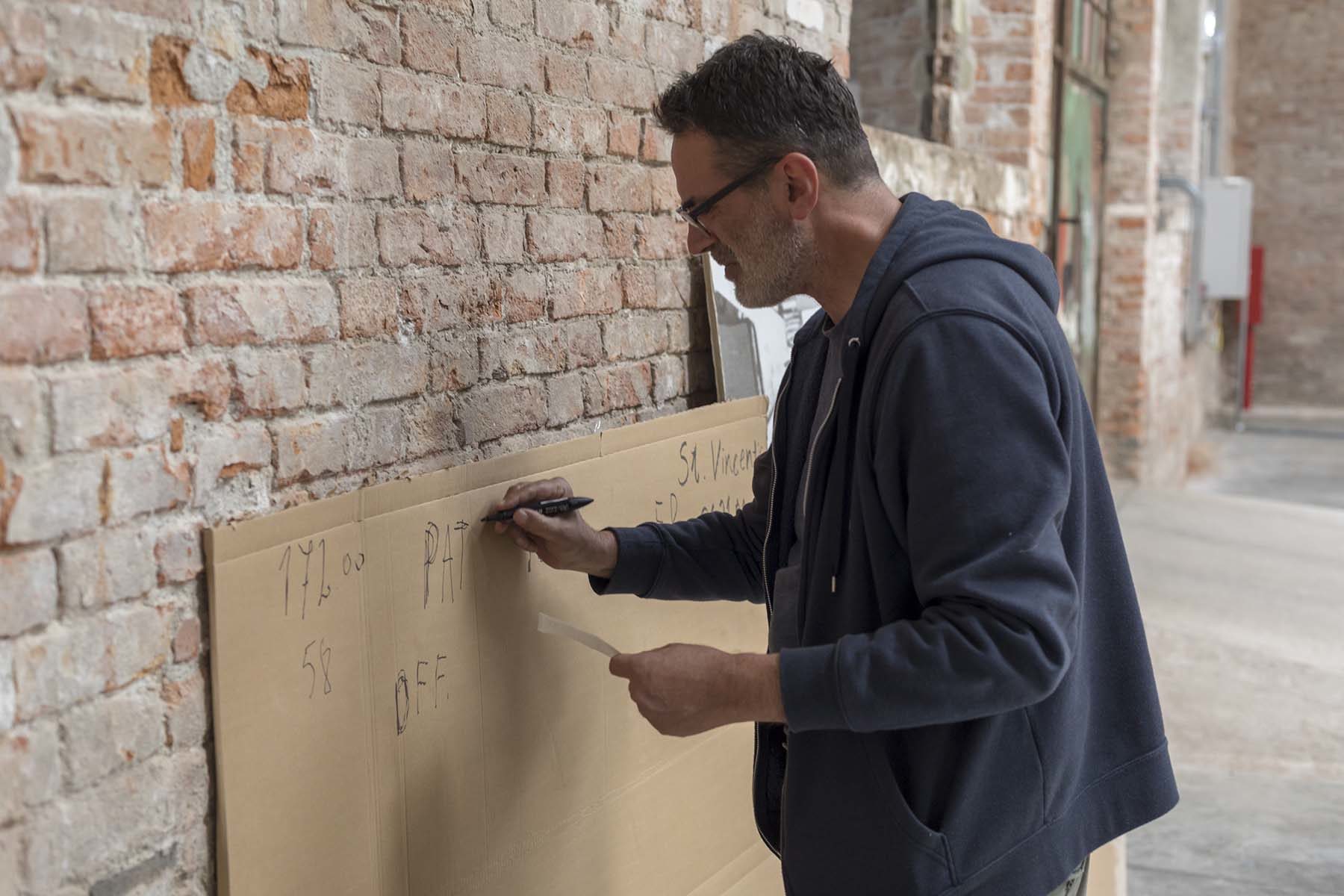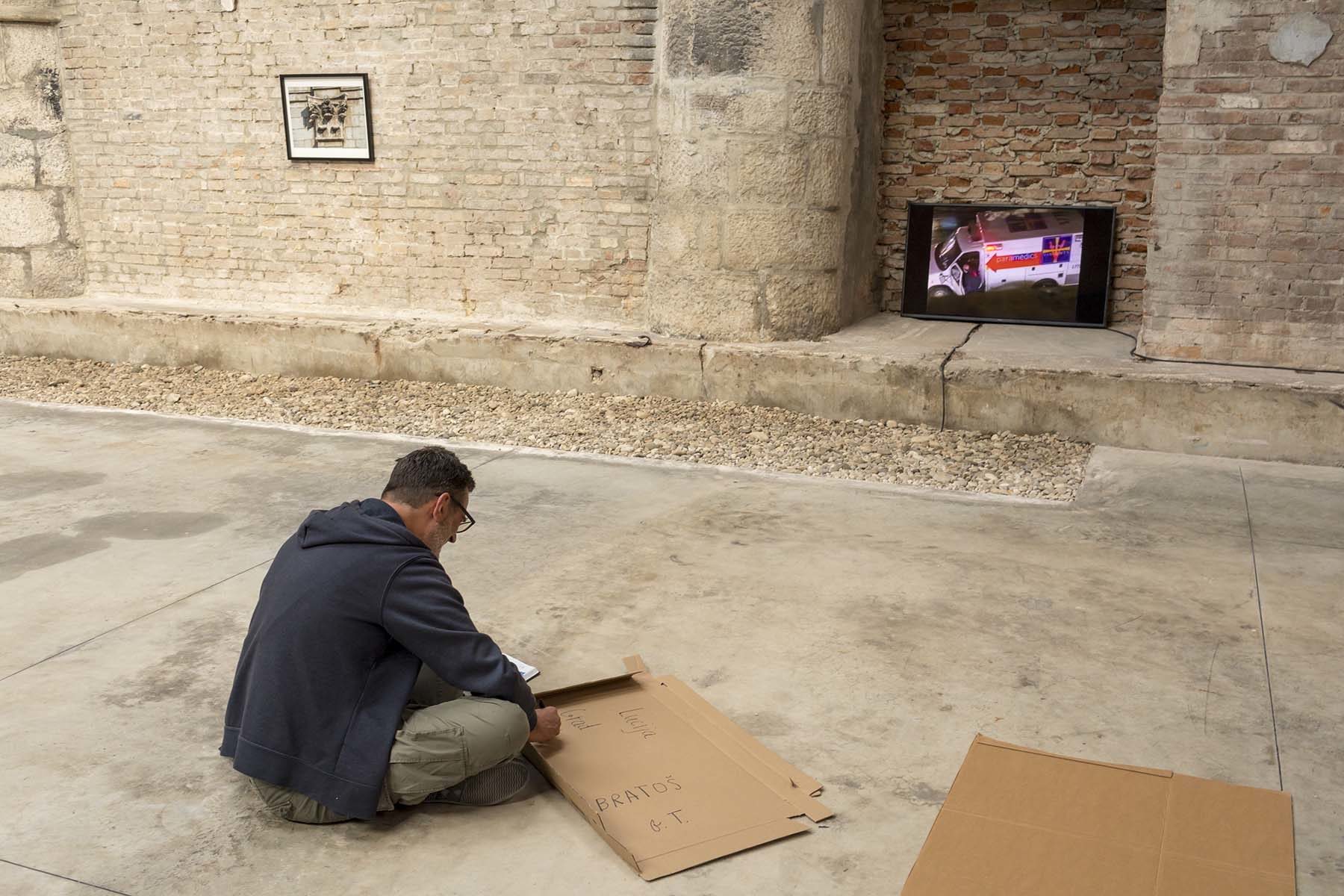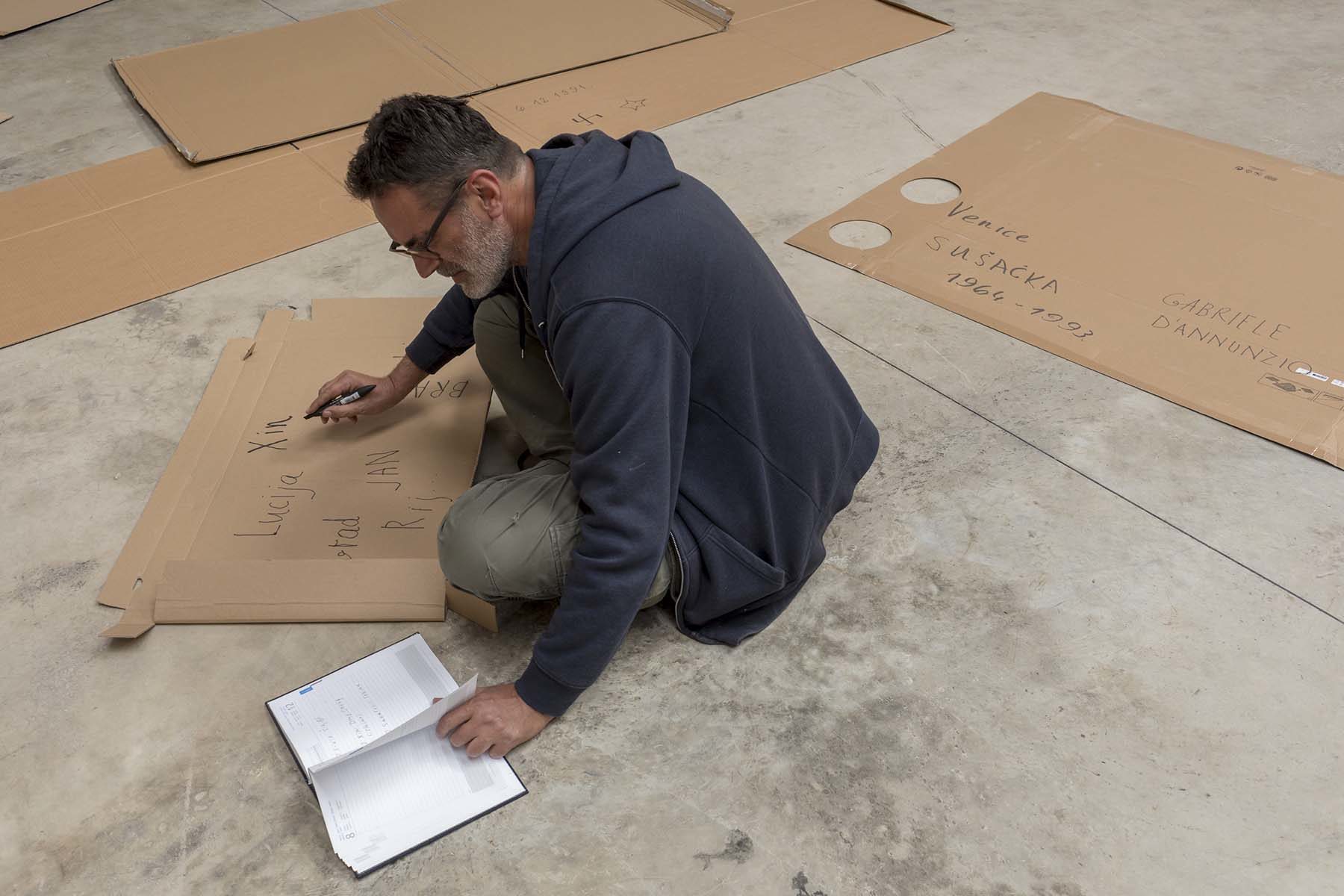Izvor Pende, Slaven Tolj, Marijana Pende
Point of Interrupted Departures
Venice (I), Arsenale, Tesa 100
May ― November 2019
Unceasing Contrasts
Notes on the art practice of Marijana Pende
Daniele Capra
A view in several directions
The practice of Marijana Pende, dedicated exclusively to sculpture, has developed along two main lines of direction, different from each other and seemingly even contradictory. The artist, in fact, veers between one approach, of an aesthetic and sensory nature, aimed at developing a direct and sensory relationship with the observer (A) and another more demanding manner that, however, has developed out of interests in forms with which the productive systems condition the present, the lives of people and the environment (B). In the first case, (A), attention is devoted directly to the viewer, to the end user, that is, who shares his or her own physical space with the work of art in a relationship of visual proximity. The artist, thanks to the work, endeavours to explore the perceptual and emotional potentials of the sculpture. In the second case, (B), however the focus of the artist is on society, a subject that is physically at a distance from the viewer at the moment when he or she experiences the work directly. In fact the artist directs her attention to the collective aspects, to the social, economic and political dynamics in which the work is immersed, the cultural context, in other words, from which it has arisen.
As shown by the recent works Looking forward to seeing you, (A) and (B) coexist in Pende’s exploration. (A) restricts the field of research to the experience that the work creates, that is, the personal relationship with the viewer, drawing the gaze and perception of him or her in a centripetal manner and, in a given way, condenses the emotional aspects of the piece. On the other hand, (B) expands the attention outwards, to the context, directing the attention by the centrifugal potentials of the work, in a kind of expansion to the political dimension. In their complementarity, both the aspects are of equal importance to the artist, and they enable her to look at the same time in two different directions in a kind of fruitful squint – like the double-faced god Janus.
The works produced for the exhibition in Venice have come into being from a combination of metal works and Perspex, coloured and rational, with other elements that are more material and more seductive, the result, in fact, of intensive experimentation conducted over a period of several years in TUP company – the Dubrovnik factory producing carbon graphite components for the mechanical, electrical and transportation industries. The difference in the materials is very clear, in their form, consistency and even colour. The straight lines and homogeneous surfaces are in contrast to the soft forms and dusky grey, recalling fabric and, more generally, aniconic painting. Pende is in fact carrying out a dialogue between two universes that are distant from each other in terms of perception and concept, but provide the observer stimuli of different sensory natures. In the first case, these are ocular stimuli, based as they are on colour, volume and light. In the second, the stimuli are tactile in nature, since the epidermal and material properties of the surface are emphasised.
Heritage of Modernism
Rectangular panels of coloured Perspex, assembled on metal square tubes, give the structure a firmly defined visual rhythm, characterised by the presence if a number of surfaces, either parallel or perpendicular to each other. The intense and homogeneous colours and the modular flat surfaces are clear references to the primary elements typical of avant-garde modernist architecture, particularly in connection with the use of simplified planes and the construction of volume by the combination of sequences of surfaces, as we find in the works of Theo von Doesburg or Gerrit Rietveld. The artist has taken up from the latter in particular the ability to cut up space into distinct elements such as polygons and parallelepipeds, which give the sculptures a synthetic but never massive spatiality. Apart from that – as often happens in the architectural productions of Ludwig Mies van der Rohe – the volume of the work is determined by the presence of levels that never define closed forms but are, on the contrary, distributed in a free form and enable the view never to be sharply interrupted.
One element that reinforces the observation of the ease and absence of the volume is the transparency of the Perspex – which is partially reflective as well. This aspect, in fact, suggests a continuity between the outer part of the sculpture and its interior, since the elements that characterise the context can be seen perfectly well inside the rectangular coloured surfaces, as if they were excerpts of the world that we see through a window. Thanks to this manner, the work tends to mix with the surrounding, suggesting to the viewer an essential continuing between sculpture and context, for they are being incessantly interfused. The extreme element of the dialogue between context and the works Looking forward to seeing you derives from the colour projections on the floor (or the partitions) of the Perspex sheets. The area of the work expands, the borders are suffused, the work expands its own presence and interacts with the space, in which it mingles, thanks to the light that passes over it.
Touch and the story of labour
The soft surfaces of the sculpture are of a completely different nature; the artist worked them by hand making use of latex and carbon (carbon graphite) powder, the consistency of which is similar to an organic nacreous cloth, suggesting the softness of human skin, which gently moves when the wind blows. These are chromatically neutral surfaces that encourage the observer to try out the sense of touch, to read and to get to know the details of the surface, making use of the fingertips, in the way people do when they cannot see although, clearly, this is not permitted. If this on the one hand calls into question the sculpture that in its volume occupies the space and determines their interaction, on the other, Pende, aware of the fact that the usual rules of interaction between viewer and work in an exhibition venue are based on the sole use of the sense of sight, encourages us to imagine what the fingers will actually never be able to try out. Or perhaps what only children will ever do when they happen to be in front of an artwork, heedless of the conventional manner of conduct, taking advantage of a moment of parental inattention.
The soft parts call to mind blankets or some other protective systems, objects that serve for preservation or as protection of people against cold, rain or other bad weather; they are, then, systems of concern about the body and it is possible to expand their functions to the work of which they are a part. What is happening, from the conceptual point of view at least, is that one part of the work takes care of itself, as a person does covering his or her body with a blanket while snoozing on the sofa in a winter afternoon. And then, such parts of the sculpture are created in a material that has very attractive elements, not only because of their wrapping consistency, but because of their ability to recall some sadomasochist erotic fantasies characterised by the use of certain sex toys and sensual clothing that wraps directly the skin.
Pende began experimenting with the application of carbon and graphite powder after research about the labourers and working conditions in TUP, that is located in the centre of Dubrovnik. The company, an old factory founded in the 1950s in the time of Yugoslavia, has been transferred unchanged from the socialist period into the capitalism of the present. During one conversation she found out that in the component production phases the factory would produce a large quantity of scrap, which were considered common unproductive waste that was rejected from the production process. The artist instinctively asked if she could take this material for herself, although at first she had no idea what it could be used for. It intrigued her, though, and she began to feel a kind of instinctive attraction from the metallic brilliance of the black carbon and the deep grey of the graphite dust. During the following months she started using the scraps in her sculptures as solid brick first, and then as dust that she used in combination with other substances. This experimentation led the artist to create a smooth grey wrapping material with the softness typical of fabric, which later became one of the component parts of Looking forward to seeing you, together with visual elements made of metal and Perspex. What she produced is a material that is at once artificial and organic. Artificial because of the way it is made, organic because it is based on the use of carbon and latex.
A new dignity
The process that Pende launched is a proof that scraps can have a continuation of their story and make a contribution to our present, turning upside down their state of rejection from the production process, a condition that in our contemporary economic model equates things and people. The artist has in fact conducted a poetic attempt at putting rejected, discarded and abandoned elements, into the centre of our attention, imparting to them a new dignity, a new reason for existence, a further possibility not provided for in the budget. This deed demonstrates a strong idealism and explicitly expresses a critique of our production system, that is based on the waste of resources and on the purely economic quantification of our actions, without even the slightest evaluation of a real environmental sustainability of our activities. The employment of something that is a waste product does not constitute just an anarchic or situationist gesture of inverting values that are usually ascribed to things: it is a political act. It is in fact the demonstration of belief in a different world in which the goods or resources that we use are not just banal cost factors, but concrete elements that have a physical form, a gravity, a history and a purpose to which we must pay attention at the moment when they are a part of our life. In this perhaps unconscious stance there is a small modicum of utopia: the artist’s wish to suggest a change of awareness of the use of productive resources by switching the attention to wastefulness and other irregularities of our economic system. All this is not suggested in the form of a general expression of the will as manifesto, but by example, the highest form of the concretisation of thinking that is wished to be real.
Dialogues
In Looking forward to seeing you, Marijana Pende puts together a huge amount of mutually conflicting stimuli. These are not just the centripetal/centrifugal oppositions that relate to the interaction between observer and work in the space, the duality of sight and touch, the oppositions between the materials of the rational and the emotional (Perspex/ carbon and graphite) similar to the antinomy between cold and warm, or inorganic and organic. We can see, however, the opposition of reality and utopia, to which the artist expresses a “small” possible solution with her own action.
The work of Pende is ultimately an aesthetic and dialogic apparatus that emphasises and presents to us the cultural, aesthetic and philosophical contradictions typical of mankind and our time. But this is in general a proof that the artistic work can be interpreted only with an awareness that it is an agglomeration of forms, intentions and promptings that are heterogeneous and sometimes even in opposition to each other. These are elements that create an open and polysemic system that has its own needs, equally necessary, urgent and ineluctable. It is up to the viewer – after having noted these infinite opposites – never to cease elaborate them.
